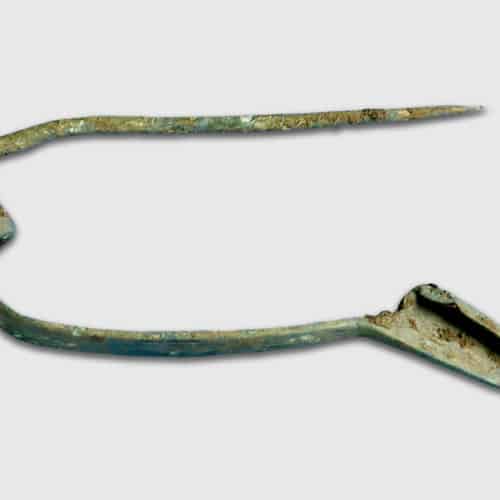Stone Age to Iron Age 6: brooch
This is a bronze brooch called a fibula. It worked just like a safety pin. In fact, the safety pin is its direct descendant!
It’s covered in mud because the photograph was taken shortly after it was dug up from the ground.
In the Iron Age this type of brooch was worn by men, women and children to fasten their clothing together. Larger examples were also used to fasten cloaks, usually on the right shoulder.
This example, from the 1st century BC, is very simple. But some were made of gold or silver and were beautifully decorated.
It’s a style of brooch called La Tène III. La Tène culture covered much of western and central Europe in the late Iron Age and is characterised by ‘swirly’ decoration on much of its metalwork.
The discovery of La Tène brooches and other imported artefacts in late Iron Age Kent is evidence that trade was flourishing across the Channel at this time.
Fascinating Fact
La Tène culture gets its name from the town of La Tène, on the north shore of Lake Neuchâtel in Switzerland. In the Iron Age thousands of objects were deposited in the lake as ritual offerings. They were discovered in 1857 when the water level dropped.

